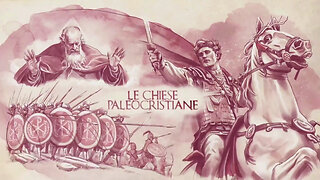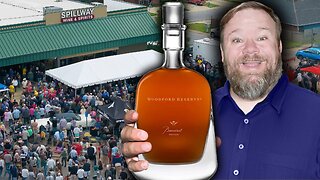The Making of the Mob: New York | A Rising Threat (S01-E04)
Episode 4: After taking out Dutch Schultz, the New York mafia has eliminated the greatest threat to their power and is back in business. By 1935, Lucky, now 38 years old and his gang are living the high life as bosses, pulling in the modern day equivalent of over $100 million. Lansky turns his low-rent gambling dens into high-end establishments.
Genovese's heroin racket pulls in millions but begins to run high stakes poker games, luring in businessmen and fixing it so he always wins. Siegel, the leader of Murder, Inc. carries out the assassination orders sent down by The Commission. Costello keeps the authorities at bay by paying off corrupt politicians and law enforcement. From his hotel suite at the Waldorf-Astoria, Luciano builds a life with his girlfriend, 20-year-old Broadway dancer, Gay Orlova. While his girl's at home, Lucky looks to expand his criminal operation on the seedier side of the underworld with illegal prostitution. Soon, the kingpin has a network of up to 200 brothels and 1,200 prostitutes in the city. Ignoring Lansky's advice to stay out of this dirty business, Lucky becomes obsessed and spends nights at his own brothel run by madam Cokey Flo.
As Dewey builds his case around Luciano, he brings in Eunice Carter, the first African-American assistant district attorney. She discovers a booker connected to the mob is bailing out Lucky's girls and uses the new wiretap, while Dewey organizes a city-wide raid to find Lucky. He escapes to his hideout in corrupt Hot Springs, Arkansas, but the search is widened to a nationwide manhunt. On April 3, 1936, a traveling New York detective recognizes Lucky, and after months on the run, the most powerful gangster is arrested. But he bribes the local sheriff who is unwilling to hand him over to Dewey and Lucky becomes Public Enemy Number One. A day later, Lucky is forced to surrender to the governor's state troopers. Back in New York, Lucky is out of bail facing charges of compulsory prostitution and plans his defense against Dewey for his trial on May 13, 1936 in Supreme Court.
-
 26:59
26:59
Adaneth - History&Politics
8 days agoSeven Wonders - Rome | The Paleo-Christian Churches (Episode 2)
76 -
 13:31
13:31
Space Ice
18 hours agoMovie "Shoot 'Em Up" Is So Good You'll Realize How Worthless You Truly Are - Best Movie Ever
1.03K18 -
 16:01
16:01
Bearing
21 hours agoTikTok has Reached NUCLEAR Levels of CRINGE
66816 -
 5:46
5:46
Chris Jericho
16 hours agoTalk Is Jericho Highlight: Renny Harlin Talks The Strangers & Nightmare On Elm Street 4
333 -
 17:05
17:05
DEADBUGsays
1 day agoThe Beast Of Manchester
4704 -
 4:54
4:54
ErmzPlays
3 hours agoHalo Composer Sets Gaming Industry ON FIRE By Coming Out As Republican
162 -
 11:15
11:15
Good Kid Productions
1 day agoCalling Lab Leak Early with the Washington Post's Josh Rogin (convo)
2751 -
 4:42
4:42
scoutthedoggie
6 hours agoWar Games in Scotland
23 -
 35:59
35:59
Brewzle
21 hours agoThis Is The BIGGEST Bourbon Drop I’ve Ever Seen
94 -
 8:03:59
8:03:59
SNEAKO
14 hours agoSNEAKO X SPECIAL GUEST
117K95